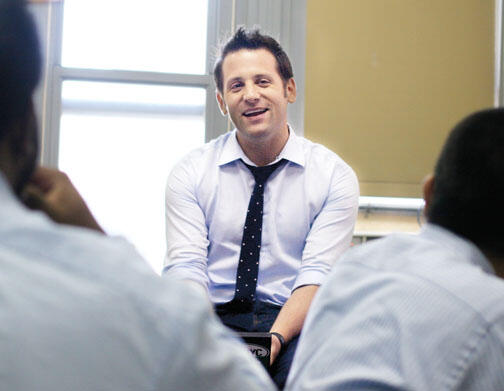Before enrolling in Princeton’s Ph.D. program in sociology and demography in 2003, Nick Ehrmann *10 taught fourth grade through Teach for America in a troubled part of Washington, D.C. He became so close with his students that over the next year, he raised more than $1 million to help support them through high school and college. The funds provided tutoring, mentoring, and family outreach, and promised college scholarships.
Six years later, when he was conducting doctoral research on how to close educational achievement gaps, Ehrmann returned to those students, expecting that they would be outshining their peers. But he discovered that despite substantial investment, his students were not performing better than other students from the same school. The biggest difference was that most of his former students expected to graduate from college. But they were “hurtling toward higher education without being prepared,” says Ehrmann.
Ehrmann was struck by research that found that the single best predictor of college completion is the academic rigor of a student’s high school. Based on his classroom experiences, he developed the hypothesis that small-group learning is the key to providing a rigorous academic environment. To test that hypothesis, Blue Engine was born.
Founded by Ehrmann in 2009, Blue Engine is a New York City-based education nonprofit that dispatches teams of recent college graduates to work as teaching assistants in 13 classrooms across four public high schools. Its mission is to increase the college-completion rate among the roughly 800 low-income students it serves. Only 8.3 percent of low-income students in the United States who start college complete a degree by their mid-20s, according to a KIPP Foundation report. Blue Engine is working to raise that number by dividing classrooms of 30 students into roughly four small groups where more individualized instruction is possible.
Many young graduates are eager to join Blue Engine as teaching assistants (310 applied for 30 positions for the current school year), and several Princeton alumni have gone through the program.
Though only in the third year of a four-year pilot study, Blue Engine is producing data to support Ehrmann’s hypothesis that small-
group instruction accelerates learning. During the 2010–11 school year, Blue Engine increased the percentage of ninth-graders earning college-ready algebra scores from 15 percent to 43 percent. Ehrmann hopes to see similar results with geometry and reading scores this academic year, and is optimistic about expanding Blue Engine in the future. “We have to earn the right to do this by proving it really works,” he says.












No responses yet